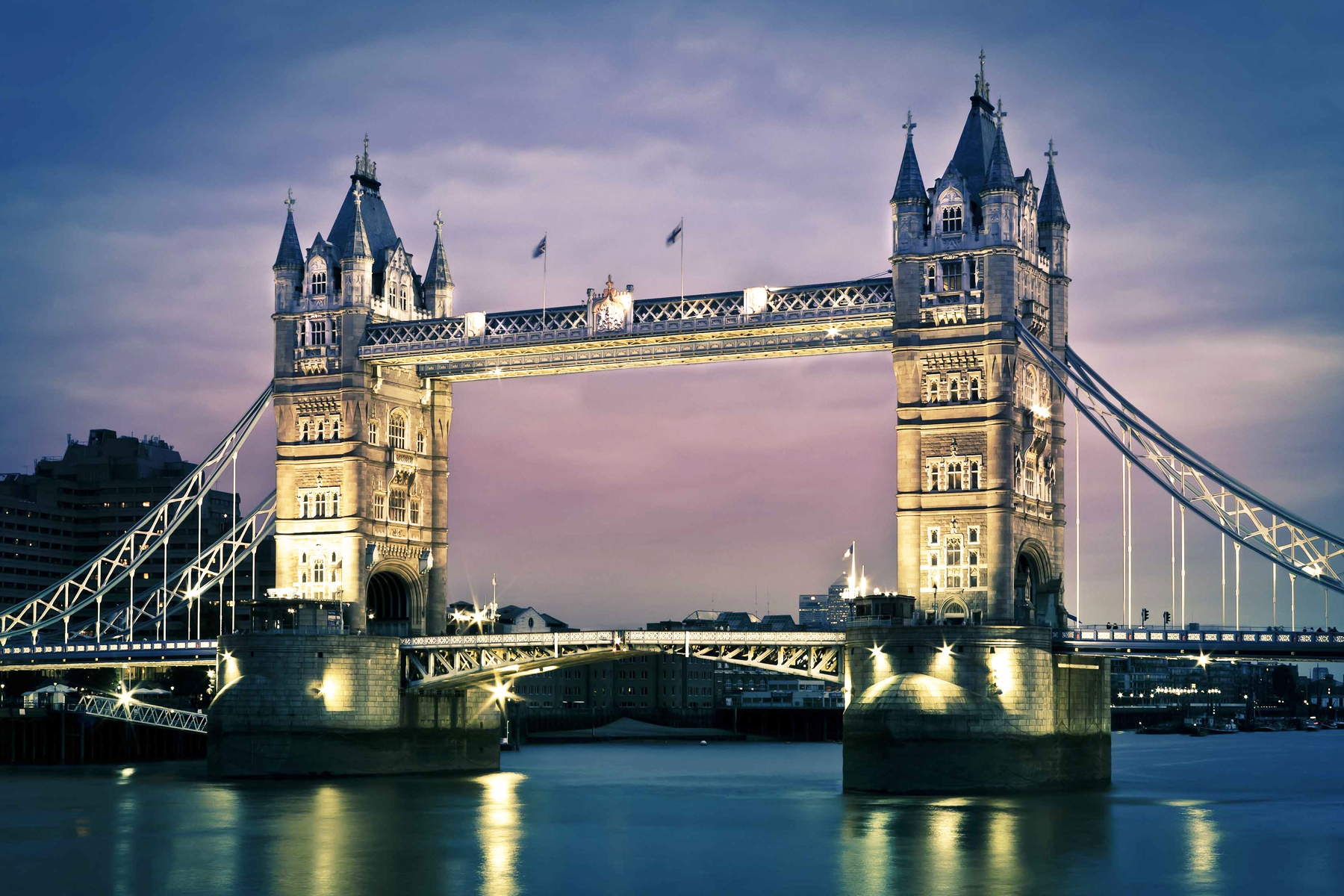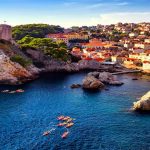Natural beauty aside, Europe is dotted with man-made marvels, some of which are so iconic that no trip to the continent would be complete without a visit to these! Here are the 10 most iconic landmarks in Europe that you simply must see at least once in your life.
1. Eiffel Tower in Paris
Eiffel Tower welcomes almost 7 million people a year, making it the most visited paid-for monument in the world. Completed on March 31, 1889, the tower was the world’s tallest man-made structure for 41 years, until the completion of the Chrysler Building in New York in 1930. Many believe that the Eiffel Tower makes Paris the most romantic city in the world, or maybe it’s the 20,000 light bulbs that make the tower sparkle like a star every night.
2. Colosseum in Rome
Half circus, half sports arena, Rome’s most iconic landmark is unmissable, especially now that they have opened the underfloor passageways to visitors where the gladiators and wild beasts once roamed. Standing inside the amphitheatre, you can’t help wonder about the brave men who indulged in gory bull fights here.
3. The Louvre in Paris
Millions of tourists flock every year just to feast their eyes on the contemporary glass Louvre Pyramid which is in fact, just the entrance. A former fortress and royal palace, the Louvre is one of the world’s greatest museums. Primarily associated with Leonardo Da Vinci’s famous Mona Lisa, Paris’ Louvre museum is a trove of 35,000 paintings and sculptures from the seventh century B.C. to the mid-19th century. It will take 3 whole days to visit each room in the museum, so we suggest making a list of exhibits you’re most interested in.
4. The Sistine Chapel in Vatican City
The Sistine Chapel is most famous for Michelangelo’s frescoes, but long before Michelangelo, Sisto commissioned painters such as Botticelli to fresco the two long walls on either side of the chapel. One side told the story of Moses, and the other, the story of Christ. Today, the Sistine Chapel is home to the greatest frescoes in the world.
5. Leaning Tower of Pisa in Italy
The Leaning Tower of Pisa, with its equal helpings of beauty and folly, is one of the most popular buildings in the world. It’s interesting to note that the tower was built with plundered loot, on a marshy subsoil with glaring engineering mistakes. The tower has infamously tilted up to 10 degrees in various directions over the years. With the ongoing restoration efforts, the tilt has now been reduced to 3.99 degrees. It’s quite a miracle though, that even after its reputation of being structurally unsound, it is open to the public and you can climb right to the top of the tower to enjoy a view of the city!
6. Acropolis & Parthenon in Greece
Acropolis is probably the most famous and the most visited monument in the world, and a UNESCO world heritage site. The Acropolis of Athens and its monuments are universal symbols of the classical spirit and civilization of ancient Greece, Among its monuments, Parthenon is the most magnificent. The Temple of Parthenon was dedicated to the goddess Athena, protector of the Ancient city of Athens, and is quite a sight to behold. Its unique architecture has inspired many universities, public buildings, palaces, parliaments and libraries in the western world.
7. Mosque-Cathedral of Cordoba in Spain
This is where religions meet halfway, literally! The Mezquita (Spanish for “mosque”) of Cordoba symbolises the many religious changes Spain has undergone over the centuries. The church was divided into Muslim and Christian halves when Muslims conquered Spain in 711. Like a phoenix, it stands tall today with columns of jasper, onyx, marble and granite taken from the Roman temple which stood in its place, and other destroyed Roman buildings in Spain.
8. Brandenburg Gate in Berlin
The Brandenburg Gate, one of the most iconic sights in modern-day vibrant Berlin is much more than just Berlin’s only surviving city gate. This landmark symbolises Berlin’s Cold War division into East and West, as well as a reunified Germany since the fall of the Wall. It’s open all year round, but if you really want to see it in all its glory, celebrate New Year’s Eve here with the locals, or watch the FIFA World Cup or UEFA EURO Championships being screened for all!
9. Charles Bridge in Prague
Prague’s most stunning landmark, Charles Bridge is a gothic stone bridge spanning 16 arches and lined with 30 baroque statues of religious figures. It is also a popular spot for Czech artists, musicians and souvenir vendors. Take a walk on the cobblestone bridge and get transported to another era, but don’t forget to marvel the architecture and the grand views of the Vtlava River from the bridge towers. Visit the bridge after dark to enjoy a breathtaking view of the fully-lit Prague Castle against the evening sky, or at dawn to beat the crowd and enjoy a glorious sunrise.
10. Chateau de Chillon in Switzerland
The Chateau de Chillon (Chillon Castle) standing by the shores of Lake Geneva, has inspired artists and writers for centuries. Lord Byron, Jean Jacques Rousseau and Victor Hugo are among the luminaries who took her as a muse. Take your time to admire the Great Halls, the gothic underground rooms, the chapel with 14th-century paintings, and magnificent views of Lake Geneva.
ALSO CHECK : The Best Things to See in Melbourne




